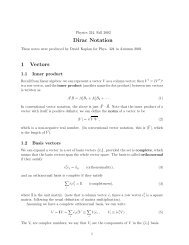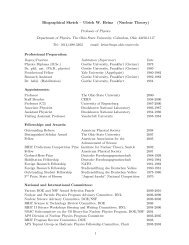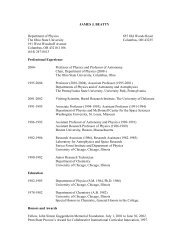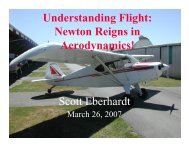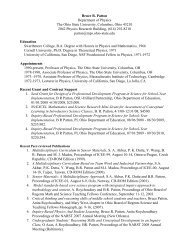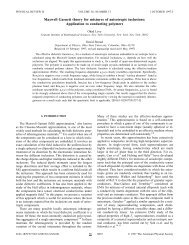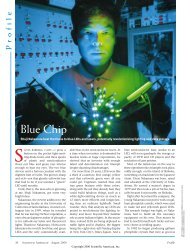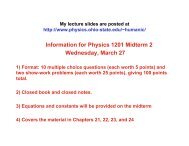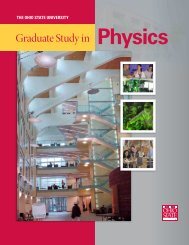Brasil Final Report - Department of Physics - The Ohio State University
Brasil Final Report - Department of Physics - The Ohio State University
Brasil Final Report - Department of Physics - The Ohio State University
You also want an ePaper? Increase the reach of your titles
YUMPU automatically turns print PDFs into web optimized ePapers that Google loves.
99<br />
national curriculum. <strong>The</strong> current effort to implement national standards in secondary schools that<br />
fall far short <strong>of</strong> a curriculum has provoked major controversy. Thus reform <strong>of</strong> the physics<br />
curriculum must be done by persuasion and examples <strong>of</strong> success.<br />
In the United <strong>State</strong>s, the majority <strong>of</strong> students who graduate with bachelors degrees in<br />
physics find employment in industry where they are <strong>of</strong>ten called engineers or s<strong>of</strong>tware specialists.<br />
Another large group <strong>of</strong> graduates pursue advanced studies in other fields such as computer science,<br />
medicine or even law. A mere handful enter secondary teaching and the remainder, about 30%,<br />
pursue graduate studies in physics. Of those, half enter industry after receiving a Ph.D. Roughly<br />
15% <strong>of</strong> undergraduate physics majors enter college and university teaching. Because they employ<br />
physics graduates, industries strongly influence physics education in the United <strong>State</strong>s, and this<br />
influence is growing.<br />
In contrast, physics graduates from universities in South and Central American countries<br />
generally pursue careers in academia, either in colleges and universities or in secondary schools.<br />
<strong>The</strong> stress on skills needed for jobs in industry has not permeated physics departments to the extent<br />
it has in the United <strong>State</strong>s. <strong>Department</strong>s in South and Central American universities graduate many<br />
more majors than those in the United <strong>State</strong>s, where departments graduate an average <strong>of</strong> 5 majors<br />
each year. Even Ph.D. granting departments average 10 majors each year.<br />
Yes, physics teachers in different countries face different environments. We must use<br />
different tactics to solve our common problems. Nevertheless, the fundamental solution to the<br />
problems facing physics education seems to transcend national boundaries. Clearly we all need to<br />
encourage better learning by physics students at all levels. <strong>Physics</strong> departments must pay attention<br />
not only to instruction in physics courses for majors and non-majors but also to the entire education<br />
<strong>of</strong> physics majors. We will need to develop flexible tracks within the physics major to meet the<br />
needs <strong>of</strong> students with different ambitions.<br />
This conference has convinced me that we have much to learn from one another. I have<br />
collected a number <strong>of</strong> new ideas, and I expect that I am not alone. We need to support IACPE as a<br />
conduit for this valuable communication. If we learn from and support one another's efforts, we can<br />
achieve our mutual goal <strong>of</strong> providing excellent physics education for all students.




